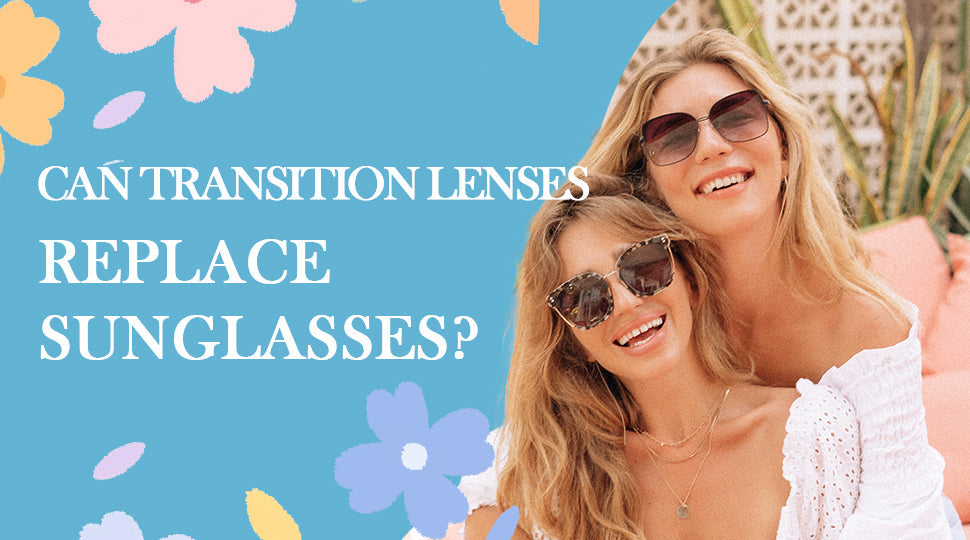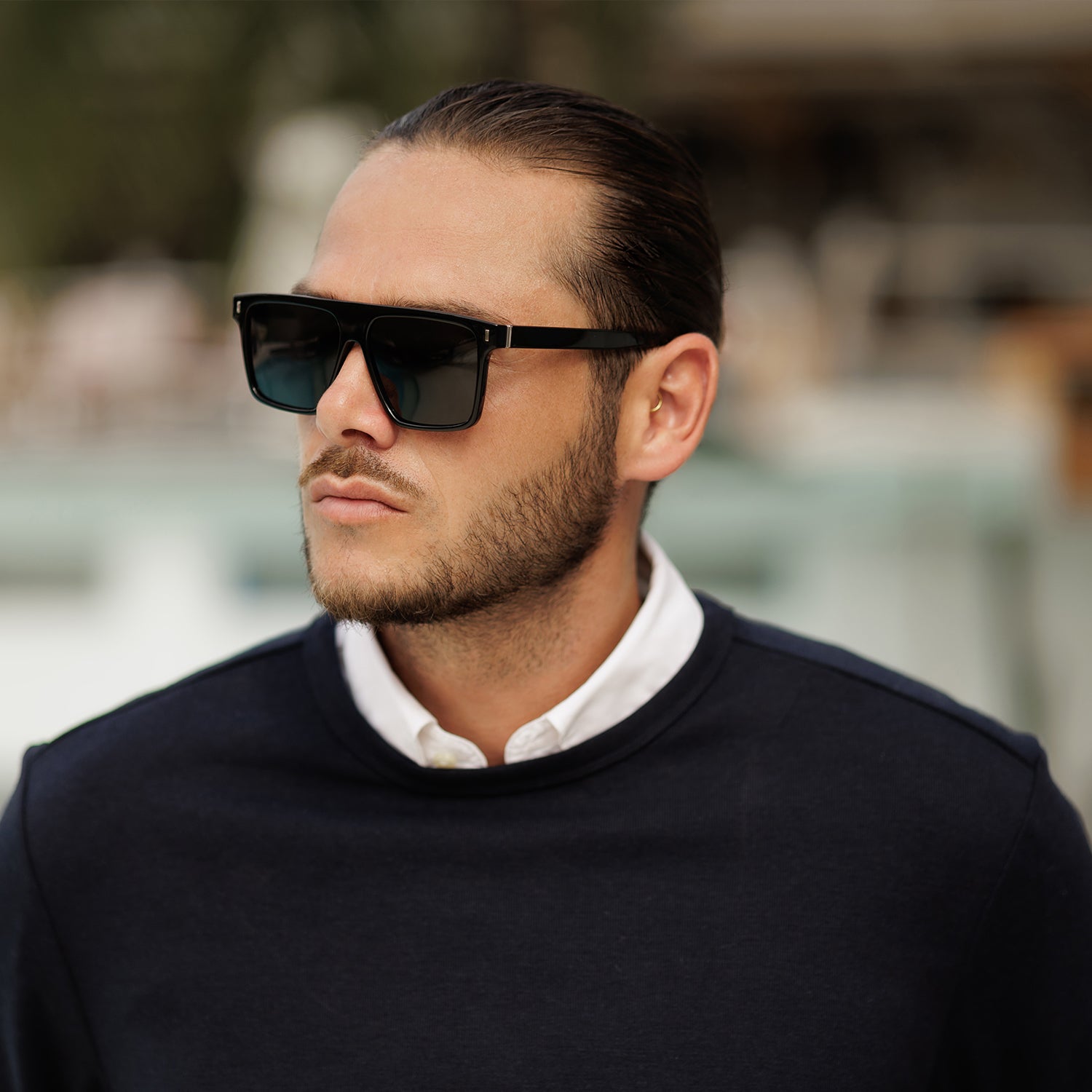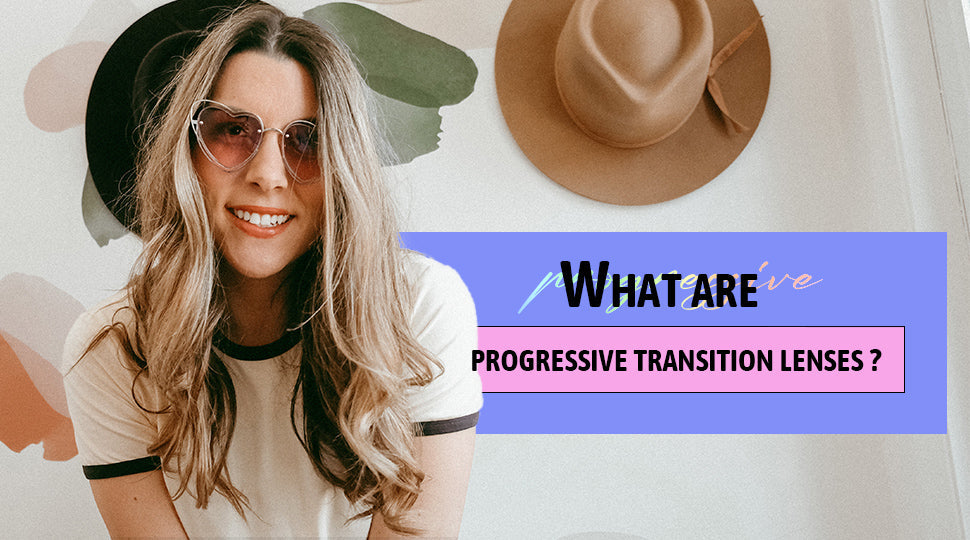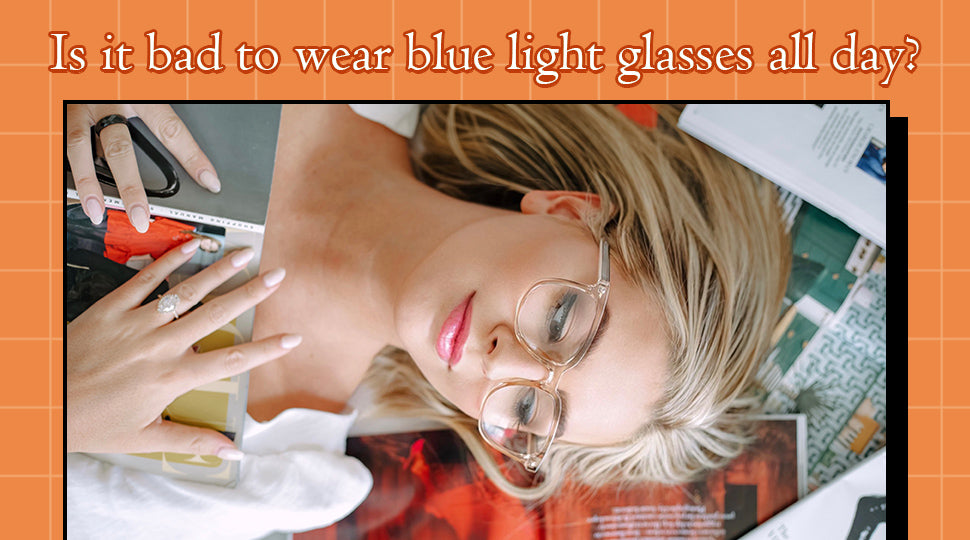
Can Transition Lenses Replace Sunglasses?
Who would like any botheration to carry two eyeglasses everywhere? A prescription glasses for improved vision and another one for protection against UV/Blue Light. What if you misplace one? Can a sunglass provide good vision outside? Can prescription glasses protect against Blue Light?
Gone are those days when you had no choice but to carry two sets of eyewear for different purposes. Now you get a variety of transition lenses that provide the power for vision correction and also protect against harmful blue light from digital devices and sun rays.
But can transition lenses entirely replace sunglasses? Does it have a protective layer against harsh glare that deflects from water, terrain, or snow? If so, why do we need sunglasses? Let’s explore the possibilities and limitations of both glasses to help you pick the ideal eyewear.
- · What is Transition Lens?
- · Transition Glasses vs. Sunglasses
- · Pros and Cons of Transition Glasses
- · Can Transition Lenses Replace Sunglasses?
- · Unfolding the Myths About Transition Lenses
What are Transition Lenses?
Transition lenses are also known as light-adaptive lenses or photochromic lenses. It uses innovative photochromic dyes that cause the lenses to activate swiftly or darken when exposed to ultraviolet (UV) radiation from the sun. The stronger the UV radiation, the darker the lenses become.
The manufacturers of Transitions® lens explain, "When photochromic lenses are exposed to UV light, trillions of photochromic molecules in the lens begin to change the structure. This reaction is what causes the lenses to darken. These molecules constantly and smoothly recalibrate so the optimal amount of light reaches your eyes whether you’re in bright sunlight, under cloud cover, or indoors."

UV radiation is harmful and can do serious damage to our skin and eyes. It has a high presence outdoors, but studies have shown we may also receive up to 40% indoors. So, it exposes us all to it at all times.
Children, due to their hyperactivity, coming in and out of the house, are more prone to UV attack because their crystalline lens is not fully developed, enabling more light to enter the eye. Kids with astigmatism would have difficulty focusing when exposed to high illumination.
Earlier transition lenses were made of glass and in grey color only, but now you get photochromic glasses in several colors and are made of various materials. Transition lenses by global brand Essilor come in 7 different colors and 6 mirror options.
Transition Glasses vs. Prescription Sunglasses
Transitions lenses are clear in their normal state and gradually darken when exposed to UV light. They seamlessly adjust their shade levels to optimize visual comfort under varying ambient environments. In the absence of UV light, especially indoors or at night, the lenses fade back to their original color.
Prescription sunglasses have a constant opacity, regardless of the environment; they always remain the same tint. They're rarely a viable option indoors.
Transitions lenses are practically ideal for almost all everyday situations. But there are situations when the transition does not happen as desired. For example, while driving, the car windshield may block the UV rays. This will reduce UV rays on the lenses, making them less dark. In such conditions, a prescription sunglass or a polarized sunglass would be a better option.
There is a limit to which transition glasses can get dark, beyond that it wouldn’t even if the light or the UV rays are intense. For such conditions, only dark sunglass with polarized lenses is the best choice.
Can Transition Lenses Replace Sunglasses?
Transition lenses function optimally by darkening the lenses when exposed to UV rays or harmful blue light from digital devices and reverting to their clear level in its absence. This variation keeps changing depending on the lighting condition. Since sunglasses have a constant opacity, the lens is devoid of such fluctuations.
Polarized sunglasses are meant for filtering bright sunrays so that you get clarity. Although it does not transition, depending upon the brightness, it is best suitable for such conditions. Adaptive lenses are not polarized; hence, do not protect such brightness as in a snowfield or sunrays reflected in the water.
Both lenses have a distinct purpose and cannot entirely replace each other in all situations. While transition lenses can work indoors comfortably and almost everywhere outdoors, sunglasses are ideal for outdoor only.
Transition lenses can convert into sunglasses, but not entirely. If you need a darker lens to reduce the glare, then you need a dark sunglass or a polarized sunglass. So, transition lenses might not replace sunglasses in all situations.
Let’s explore further.
Pros and Cons of Transition Glasses
Pros
The fundamental characteristics of transition glasses are to provide vision correction and protect against glares and UV rays. They perform both functions at all times with the same lens.
You get the benefit of two glasses at the cost of one. This eliminates the need to carry two sets of glasses, resulting in minimizing the cost of eyewear.
The convenience of using it indoors and outdoors makes it less cumbersome to carry. Otherwise, you may have to carry two sets of glasses all the time. Moreover, you can always attach an elegant glasses chain to keep it secured and make it a fashion statement.
Unlike earlier days, photochromic lenses now come in a variety of styles and colors. Be it bifocals, progressive, or scratch-resistant lenses, they can meet many prescription needs.
Cons
It takes a while to get dark in cold weather conditions. So, if you are out skiing, the light reflected on the snow is plane-polarized, giving an uncomfortable glare hitting your eyes.
While driving, these lenses do not darken sufficiently because the car windshield blocks most UV rays.
Some brands have varying degrees of transition. An expensive brand will not render the same level as a cheaper one as it may take longer to adjust to the brightness as it varies in quality.
Unfolding the Myths About Transition Lenses
Before we uncover the myths, let’s understand the science behind the transition process. Warmer temperatures can cause the molecules to be thermodynamically more active, thus the process of fading back is faster. Whereas colder temperatures cause molecules to move slowly, the pace at which their chemical bonds fade takes longer.

Myth 1: Transition lenses cannot become dark in a car
The car windshields block most UV light. So, most photochromic glasses do not offer sufficient darkness for this reason. However, there are specialized lenses like Transitions XTRActive® that can darken even inside the car and respond to UV and natural light. Then there are Transitions Drivewear® lenses that can enhance the driving experience.
Myth 2: Only older people should use transitions lenses
Transition lenses are perfect for dynamically adjusting to changing light levels both inside and outside. This feature has nothing to do with anyone’s age.
Transition lenses are also perfect for children who cannot maintain several pairs of glasses. Youngsters are more exposed to blue light emitting from digital devices because of their constant use. Transitions XTRActive® lenses have the highest blue blocking effect (34%). Combining Crizal® Prevencia® lenses with Transitions XTRActive® lenses can be a good aid if you are a migraine sufferer or someone with significant light sensitivity.
Myth 3: While indoors, transition lenses aren’t fully clear
The color-changing molecules rapidly darken but take longer for the chemical transition before they return to their neutral clear state. As a result, it may take longer for your lenses to clear completely. Transitions Signature VII® lenses are fully clear indoors in all colors: grey, brown, and graphite green.
Conclusion
It's hard to dispute the benefits transition lenses provide for our complex lifestyle. They shield your eyes from harsh glare and harmful UV radiation while being convenient and managing a substantial chunk of the variations in lighting conditions every day.
So, can we confidently say transition lenses can replace sunglasses? Well, we can only conclude with an accommodating note that for some activities, such as long drives and sporting activities, sunglasses are undoubtedly an excellent supplement.






